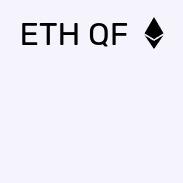EthQF
We fund with the community. For the community.
The problem EthQF solves
On crowdfunding platforms, the real worth people are putting into a project is not always obvious.
Some projects may have less number of donations but each being a huge sum of money, other projects may have many donations but each being only a little sums of money.
This leads to unfairness to the projects that should actually be funded.
Eth QF is a decentralised platform that enables crowdfunding for projects on Ethereum ecosystem. Eth QF provides projects funding through the concept of Quadratic Funding.
What is Quadratic Funding?
- Quadratic Funding converts 1$ to 20$!!
Quadratic investment is a concept that extends ideas from quadratic vote casting to a mechanism for investing.
The matching pool is at the heart of Quadratic funding.
A matching pool is a money pool that is provided by matching companions. Matching partners are businesses, individuals, or even protocols that assist with public goods tasks. The funds collected in the matching pool are used to multiply individual contributions to exceptional initiatives.
You can learn more about Quadratic Funding here.
Why Quadratic Funding?
- Community driven : In Quadratic Funding, the algorithm used after each CLR Matching Round, checks the number of contributors who donated to a certain project, in layman terms, the higher the number of contributors higher will be the amount supported to a project.
- Need of the hour : Crowd funding schemes for public goods have a fundamental weakness- the match amount for a project is proportional to the sum of contributions it receives during a stipulated period of time, whereas if community has more demand for some project than the other, proportion should not be equal. CLR Matching solves this problem.
Challenges we ran into
We were completely new to blockchain technology and hackathon environment, but we learned a lot during our time at this event. We had no prior experience working with smart contracts, so we had to figure out a lot about how they work on our own. The process of sending and receiving transactions was a huge challenge. Official documents and extensive research helped us to overcome most of our bugs. To fix our errors, we had to spend all night going through documentation to understand how data is processed under the hood.
Writing in Solidity and covering the edge cases was challenging too.
Finally after doing all the testing for the contract, integrating it with our client was a hurdle too.
Since it was a little difficult to use the Ropsten testnet for this due to issues with less eth in the faucets and our limited knowledge to configure the deployed contract during the duration of this hackathon, we decided to run it on a local machine.
